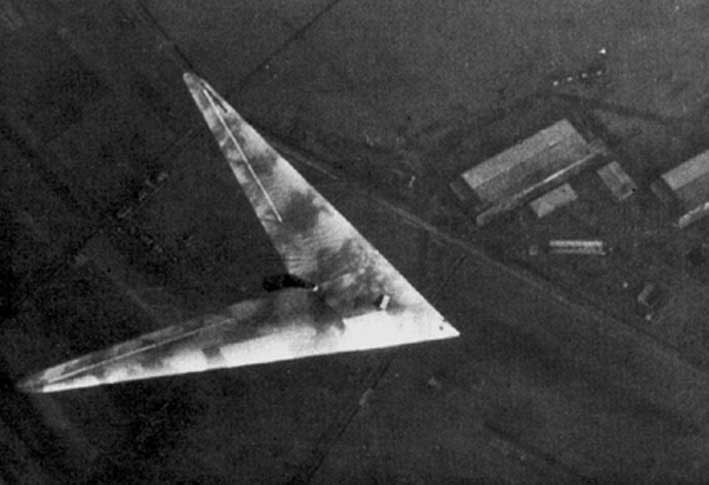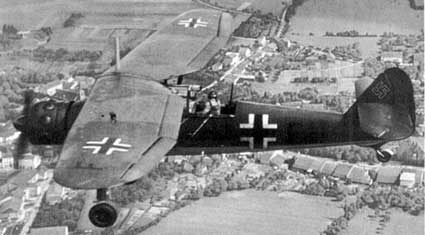

History:
A long with the Lippisch DM-1 the Horten's Ho XIII represents the most advanced aerodynamic design in the world in 1945, designed to test the low speed control of a sweeped wing of 60°, which was the intended sweep of the supersonic Horten Ho X. The glider was made at Hersfeld in 1943, using modified wings from the Ho III mounted onto a new center section, the pilot sat in a gondola under the center section trailing edge (this can just be seen in the photo) with entry being by removing the tail cone. Take off was by means of a toe, the aircraft was said to handed very well in all it's test flights which amounted to some ten hours in all.
Here is flight report from the maiden flight by Hermann Strebel:-
|
"Weight and c/g was 393 kg, and 4725 mm respectively, wind W. 2 m/s, take off to the NW behind a Hs 126. The takeoff was normal, tow speed 130-140 km/h, good aileron and elevator control, weak rudder, adverse yaw light. Poor forward visibility, but adequate for the tow. Released at 2700 meters, and flew at speeds between 70 and 150 km/hr, straight ahead. Heavy elevator! Ailerons normal when slow, but at 150, roll control is almost nonexistent. With the stick all the way back, I get 70 km with no stall tendencies. The rudder is still weak, but coordinated turns can be made. A light roll oscillation of about 5 occurs with 45 bank; aileron application will dampen these somewhat. The approach is difficult, because the extended skid and the overhanging center section, blocks the view of the runway, making landings in unfamiliar areas very difficult. The aircraft touched down fast and bounced a few times, the third bounce resulting in a flat glide with only 50 km indicated. The ineffective spoiler could not prevent the long float over the ground." |

|
The next step was to be a powered version with a Argus As 10 piston engine, to carry on testing. With the outcome to be the Horten X, roughly the same general dimensions as the Ho XIIIa weighing around 7,000 kg powered by a single Heinkel He S 011 turbojet engine with a thrust of 1,500 kg, it was calculated that a speed of around 1,400 km/h would be possible. By the time of the end of the war the Horten HoXIIIa was destroyed by liberated Soviet prisoners, only the main spar and a wing rib ever being found, ALL drawings, calculations and plans were gone for the whole Ho XIII / X supersonic project.